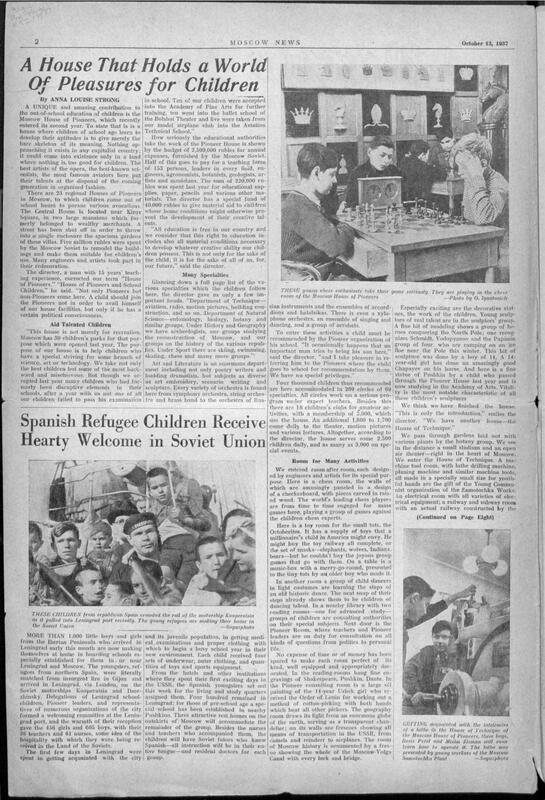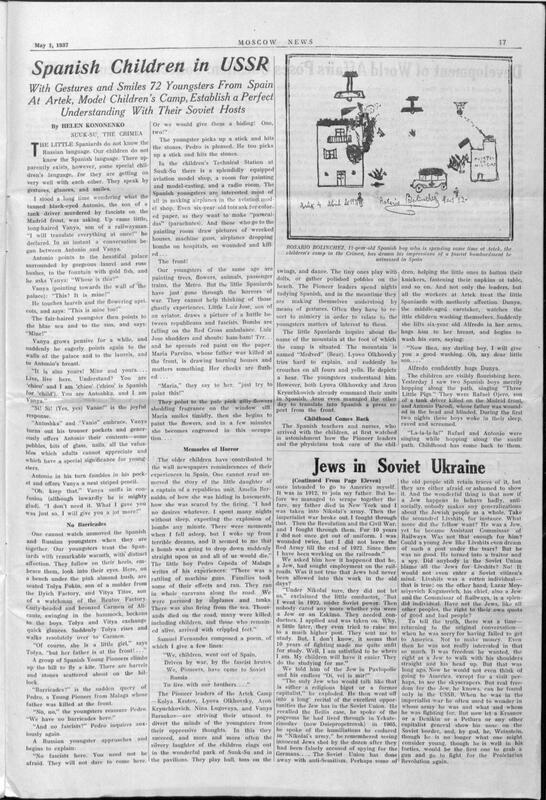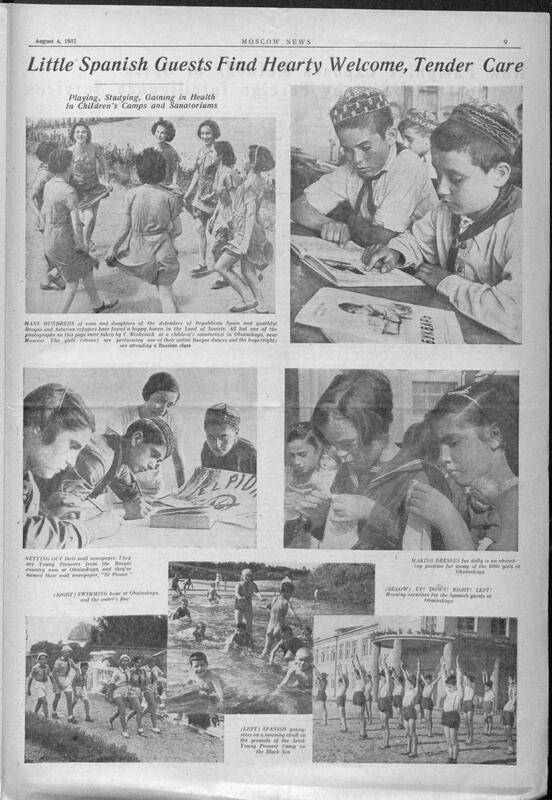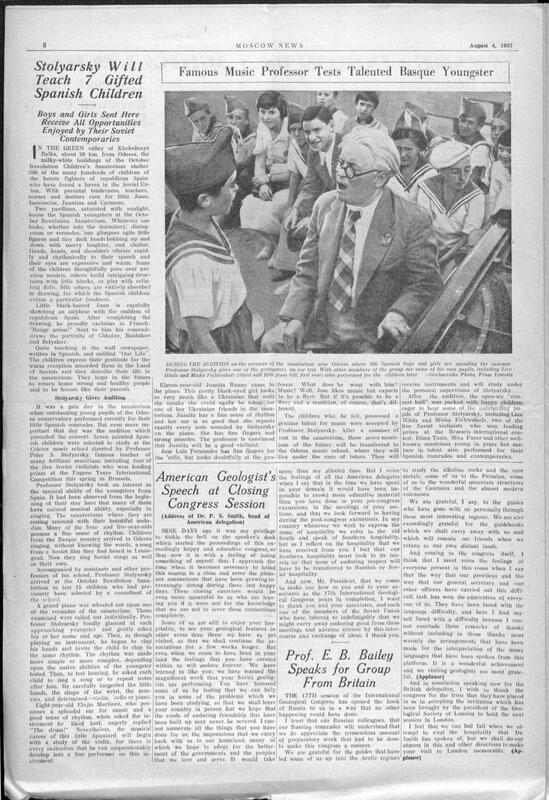-

This Moscow News article chronicles the arrival of the children seeking refuge in the Soviet Union. The article details how the children were transported from Northern Spain into Leningrad (St.Petersburg) where they were greeted by local youth leaders and state representatives. The children were provided clothing, toys, as well as doctors and housing before being enrolled in local schools where lessons were taught primarily in Spanish. Similar articles from the Moscow News, a Russian-based newspaper for english readers, emphasized the state’s treatment of these children, being sure to frame the program as both a humanitarian effort and an example of multiculturalism within the Soviet state.
-

This article, written by Helen Kononsenko, details the ways Soviet and Spanish children interacted. Later, the article looks at the traumatic experiences of Spanish refugees and how they are being handled while living in the Soviet Union.
-

These images show a snapshot of Soviet life, which included the spanish children. Images show the children celebrating the end of the school term and a year since arriving in the USSR.
-

These images from the Moscow News feature the Spanish refugees at various camps and sanatoriums (spas/outdoor camps). Sanatoriums were popular in Soviet culture for their physical and mental health benefits. Education for these children was a combination of Russian and Spanish lessons, working to teach the values of the Soviet Union while not depriving the children of their cultural heritage.
-

Child refugees from Spain were given exceptional educational opportunities during their
first years in the USSR. Provided with classes in both Russian and their native languages, they were taught a blend of Russian and Spanish culture as well as opportunities like music lessons from Soviet celebrities such as violinist Pyotr Stolyarsky.





